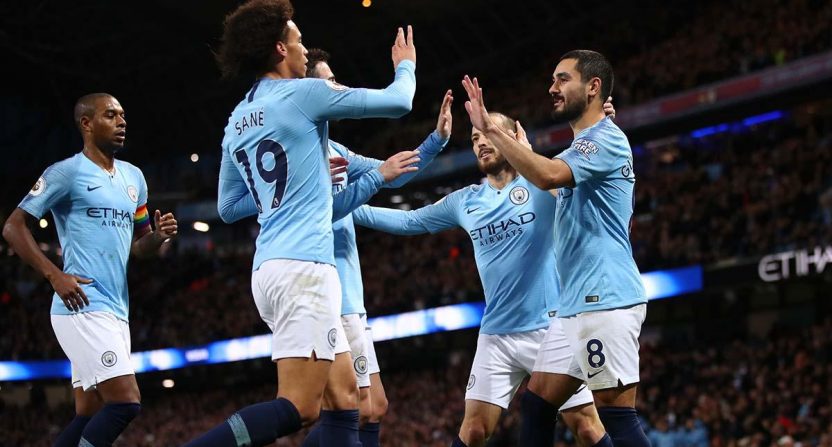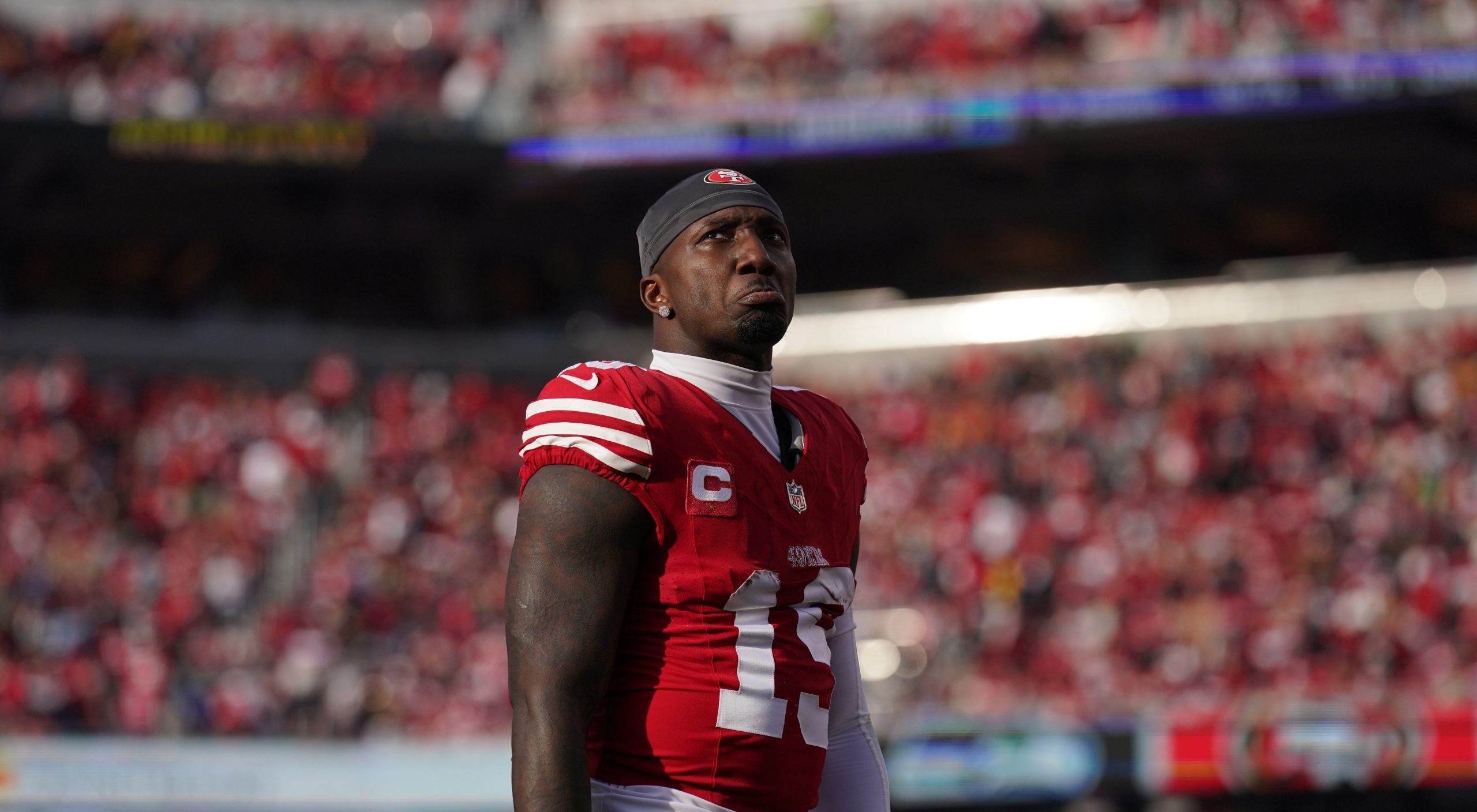On April 13th, six points separated Tottenham, Chelsea, Arsenal, and Manchester United for the final two Champions League spots. It’s hard to imagine anyone could have predicted what would come next.
All four teams seemingly imploded over the final five games. They combined to take just 22 of the 60 available points. Chelsea won one game and gained points on Tottenham and Manchester United.
In hindsight, what happened wasn’t too much of a surprise.
Fatigue had long set in to Ole Gunnar Solskjaer’s Manchester United. Tottenham were dealing with a rash of injuries and were still fighting on in Europe. Chelsea and Arsenal were still going in the Europa League.
The logical theory for why this happened was because these teams didn’t have enough depth. Chelsea notoriously works with a small squad. Arsenal wasn’t very active in the transfer market last summer. Tottenham famously didn’t sign anybody.
On the other side of the coin, Manchester City seemingly have at least two players at each position. Liverpool had some good depth up front, and five guys to compete for three midfield spots.
My original idea for this post centered around the idea that over the past decade, squad sizes in the Premier League have gotten smaller. That comes from a combination of the rise of transfer fees, salaries, and specialists. Over the past few years, City and Liverpool have focused on adding depth rather than top end talent.
Turns out that, for the most part, this theory isn’t true at all. In fact, our entire narrative of depth could be off.
This season, Liverpool had the fewest number of outfield players who played at least 20 percent of available minutes in all competitions with 15. That’s two fewer than Tottenham, the club that’s had the “lacks depth” narrative hanging over them all season.
Liverpool had six more players play at least 90 minutes but not 20 percent of the available minutes. 24 total players made a competitive first team appearance for Liverpool. Spurs had 27 players get a first team run out, with five playing at least 90 minutes but less than 20 percent of the total available minutes.
There are a lot of factors that can influence this. Injuries is the obvious one. But with both teams using fewer than the rest, that suggests they didn’t suffer any major injuries (I know… Harry Kane disagrees with that).
At the end of the day, it’s the two squads with the least depth getting ready to battle for Europe’s top prize.
As I mentioned before, my theory was that teams were getting tired because their squads were so much smaller than they used to be. Is that true?
To try and answer this question I looked at how all the top six teams distributed their minutes this season. I wanted to compare it to teams from around a decade ago so I looked at minutes distribution for those teams as well.
I chose specific seasons for pretty arbitrary reasons. I looked at seasons from the late oughts since that was the last time English teams dominated Europe. Here’s the breakdown:
-Liverpool – 2006-07: The Reds went to the Champions League final. That means more matches and being pushed right to the end of the season.
-Manchester United and Chelsea – 2007-08: Both teams went to the Champions League final and contested the title to the final day of the season. I also remember United having a massive squad that year (more on that later).
-Arsenal – 2008-09: Made it to the Champions League semifinals.
Tottenham and Manchester City are much trickier. Neither team were part of the ‘big four’ last decade so the playing field wasn’t the same.
-Manchester City – 2008-09: Their first season under Middle Eastern ownership where they were throwing money around. They were also in the UEFA Cup that year so they had more matches.
-Tottenham – 2007-08 and 2009-10: They won the Carling Cup in 2008, thus providing at least one cup run, but they finished 11th that season. They finished in the top four in 2009-10.
The results were remarkable. Mainly because almost nothing has changed.

Over the course of a decade the number of players teams rely on has remained pretty stagnant. That’s especially true for the ‘big four’ clubs of Manchester United, Chelsea, Arsenal, and Liverpool.
The only teams who had double digit additional players over 90 minutes but less than 20 percent of minutes were the late oughts Tottenham and Manchester City sides. That is attributed far more to neither team having a set starting XI than having copious amounts of depth.
Now that we know that teams are relying on the same amount of players that they were a decade ago, we can ask what in the world happened this year? Four teams were clearly tired and faded down the stretch. What’s changed?
The answer to that is in that last column. Despite the fact that there’s been no change in the amount of games teams play, there’s been a significant drop in the total amount of players used.
Manchester City aside, the rest of the top English teams are pretty even. Each team’s starting XI is comprised of some truly great players. What ultimately sets teams apart isn’t the amount of depth they have, but if they catch lightning in that depth. Believe it or not, managers can influence that.
Teams these days aren’t distributing their minutes properly. Pep Guardiola realized that. Last season, City played 25 guys, won 100 points in the Premier League and won the League Cup. They were bounced from the Champions League in the quarterfinals and the FA Cup in the 5th round.
Pep knew they needed to get fresher, not better.
Despite having a surplus of first team players itching for game action, Pep used three additional players this year. He threw academy players into cup matches, not to give them a chance, but simply to eat minutes. Even in September, those minutes add up.
Squad depth is essentially the concept of a super sub on a macro level. One of the biggest reasons “super subs” are so effective is because they come into a game with fresh legs and play against tired ones.
Your squad players are no different. An average but lightly used player has a better chance of having a big game in March or April when his opponents are tired than in October.
Michael Carrick used to find himself out of favor at the start of every season. When asked why Sir Alex Ferguson would just say, “you’re not good until it starts raining.” Carrick would be sparsely used over the first 10 weeks of the season, but down the stretch United would have a much fresher midfielder.
Guardiola and Klopp realized this. Guardiola relied heavily on Phil Foden down the stretch this year. His goal against Tottenham was just as crucial to City’s title win as Kompany’s was against Leicester. Daniel Sturridge got the bulk of Liverpool’s backup striker appearances this year. However, it was Divock Origi who got the call to replace the injured Roberto Firmino in crucial late season games.
Origi scored six goals for Liverpool this year. Four of them were massive. Those goals don’t make him a better player than he is. But the way Jurgen Klopp used him increased the chances of Origi coming up big. That was the difference between Liverpool going to the Champions League final and not.
Of course, some managers benefit from this unintentionally. Pressure from the media forced Maurizio Sarri to finally give youngsters Callum Hudson-Odoi and Ruben Loftus Cheek more chances.
Chelsea’s late climb into the top four is thanks to Hudson-Odoi getting 70 percent of his Premier League minutes in April. Ruben Loftus-Cheek had 51 percent and 35 percent of his overall minutes come in April and May. The fresh legs breathed new life into Chelsea, and allowed older players like Pedro and Willian to focus on the Europa League.
Premier League teams fading down the stretch is a direct reflection on their manager. Squad sizes have remained pretty stagnant over the year. The difference is how the manager manages the minutes.
[Photo: Getty Images]







